On View
At 88 Years Old, Julio Le Parc Gets First Museum Survey and Two Incredible Solo Shows
The octogenarian artist finally gets his day in the sun.
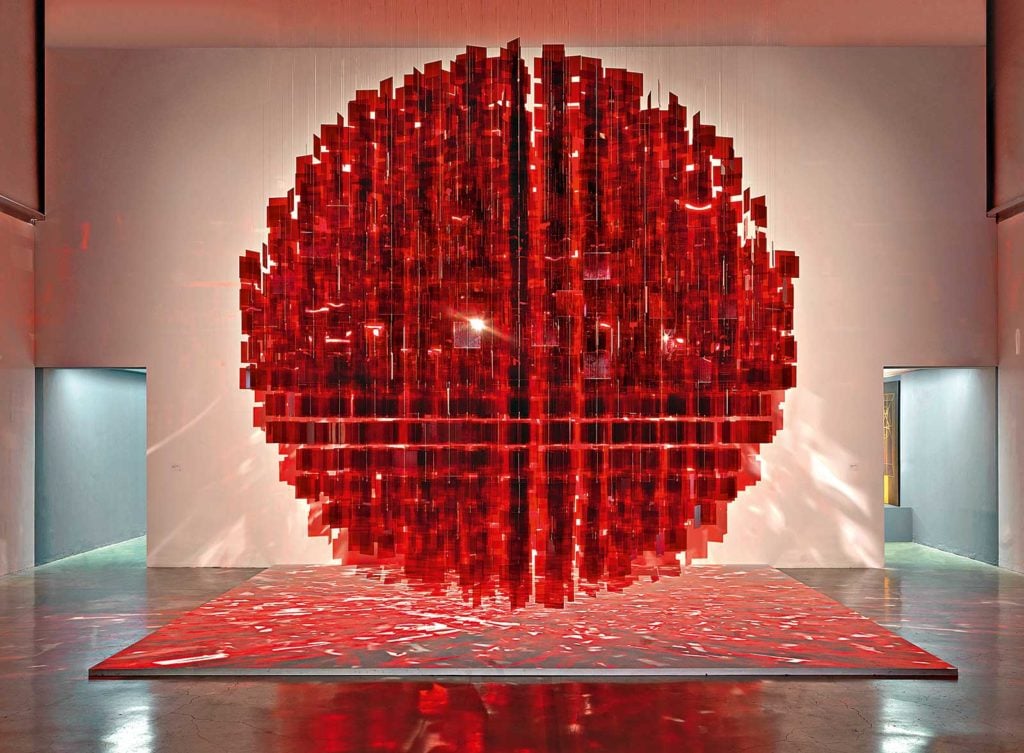
The octogenarian artist finally gets his day in the sun.

Sarah Cascone

It’s been a long road for Julio Le Parc, who at 88 is celebrating his first-ever US museum survey, at Pérez Art Museum Miami (PAMM). He also has his first solo shows in New York since 1973, with dueling exhibitions at Galeria Nara Roesler and Galerie Perrotin.
Born in 1928 in Mendoza, Argentina, Le Parc has lived in Paris since 1958. As a pioneer of the Kinetic and Op Art movements in the 1960s, he has close ties to numerous artist groups (Germany’s Zero Group, Yugoslavia’s Nouvelle Tendance, Argentina’s Tucumán Arde artist’s movement, and Paris’s Groupe de Recherche d’Art Visuel, which he co-founded).
Today, Le Parc’s practice remains as vibrant as ever, half a century after he began his art career.
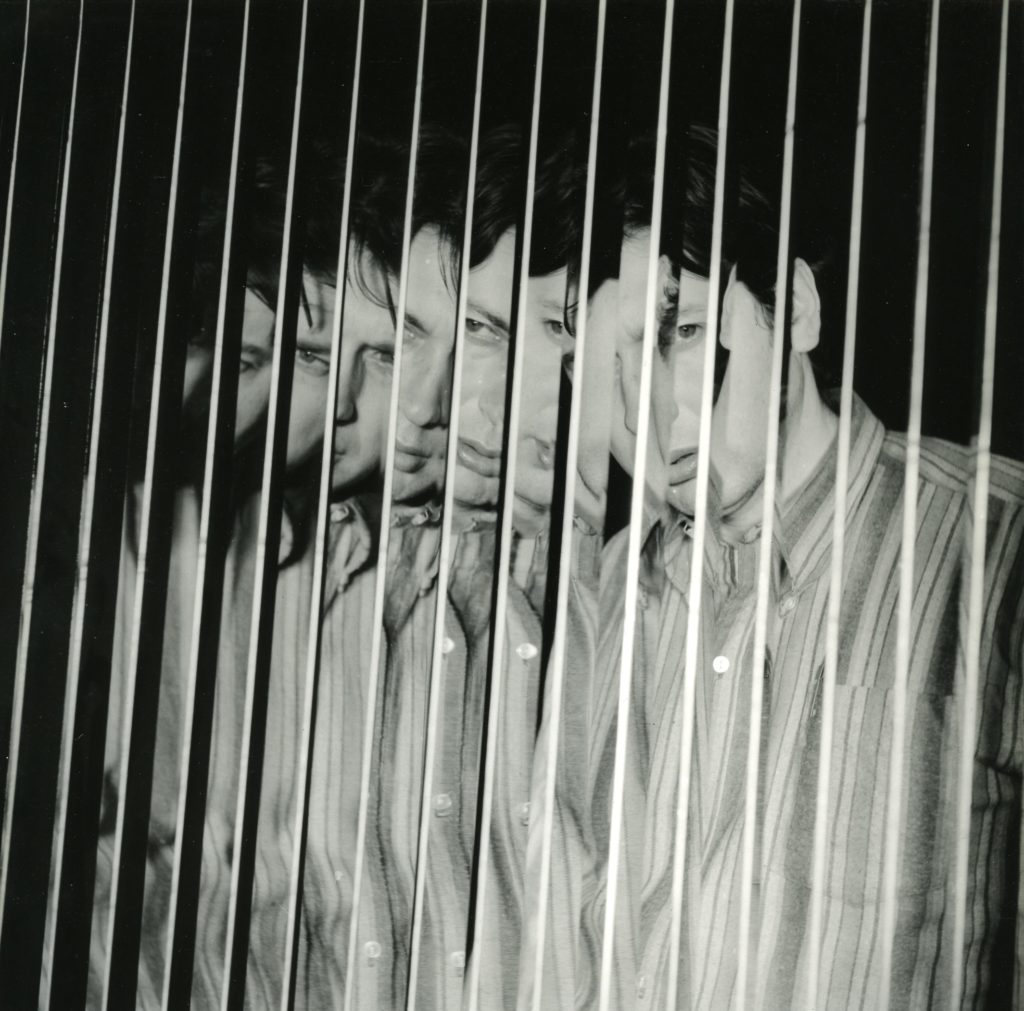
Julio Le Parc. Archival image courtesy of PAMM.
“Le Parc championed theories of immediacy and spectatorship as a vehicle for social and political change,” Estrellita B. Brodsky, guest curator of Le Parc’s PAMM show, told artnet News in an email. The artist, she added, “has long challenged the idea of the fixed work of art, favoring collaborative experimentation and the idea of artist as instigator.”
At Perrotin, the gallery’s main floor is mostly dedicated to a series of new, large-scale paintings called “Alchimies.” Since 1959, Le Parc has organized his paintings within in a strict scale of 14 colors. The new works, with bold dots of color creating circular designs on a black canvas, are imbued with a strange, otherworldly beauty.
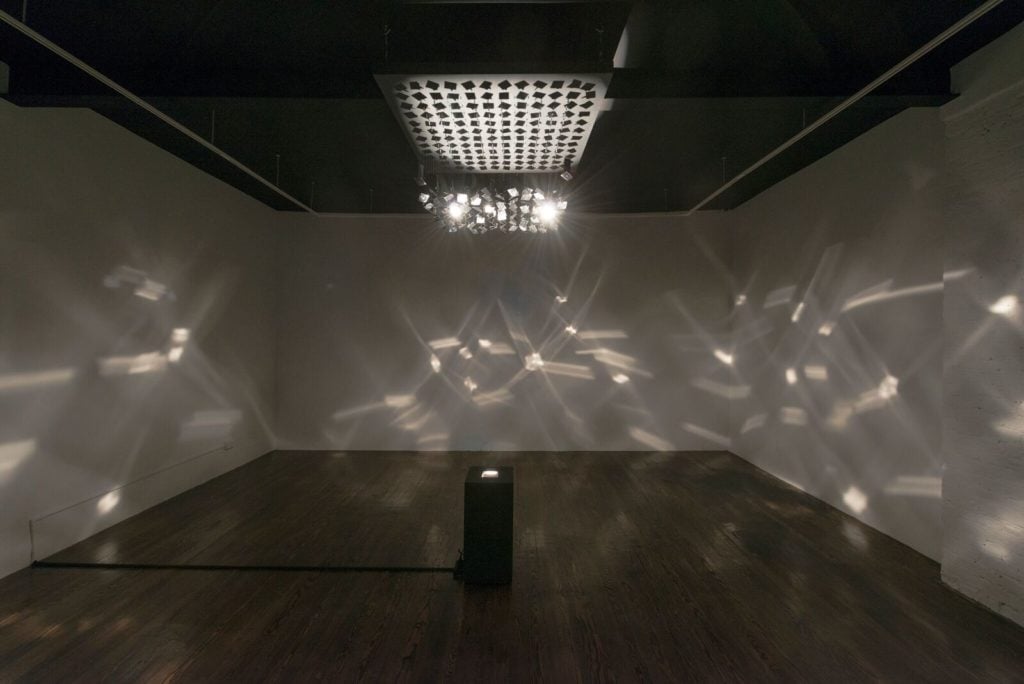
Installation view of Julio Le Parc 1959 – 1970. Exhibition at Galeria Nara Roesler, New York. Photo by Adam Reich, Courtesy Galeria Nara Roesler.
“One thing would lead to another, from the yellow to the green to the blue,” said Le Parc of his unique process in an interview with artnet News. “In those multiple sequences and in that experimentation, there were any number of possibilities that were opened up.”
The paintings are paired with a large captivating mobile of sorts, an over seven-foot in diameter sphere formed from translucent blue Plexiglas squares hanging in the air, a shimmering mass of light and movement titled Sphère bleu fluo (Fluorescent blue sphere) (2001/2016). The sculpture is reflective of Le Parc’s interest in notions of perception.

One of Julio Le Parc’s “Alchemies” and Sphère bleu fluo (Fluorescent blue sphere) in his exhibition at Galerie Perrotin. Courtesy of Yamil Le Parc.
Downstairs, a darkened room is illuminated by two ingeniously-constructed motorized light installations, Continuel-lumière avec 49 cylindres (1967/2016) and Lumières alternées (1993/2011). Together, they cast striking, patterned shadows across the space.
It’s the last exhibition for the gallery at this location, ahead of its impending move to the Lower East Side, and it makes a big impact. It also pairs nicely with the artist’s other current New York show, a presentation of a select group of early works at the Chelsea outpost of Brazil’s Nara Roesler.
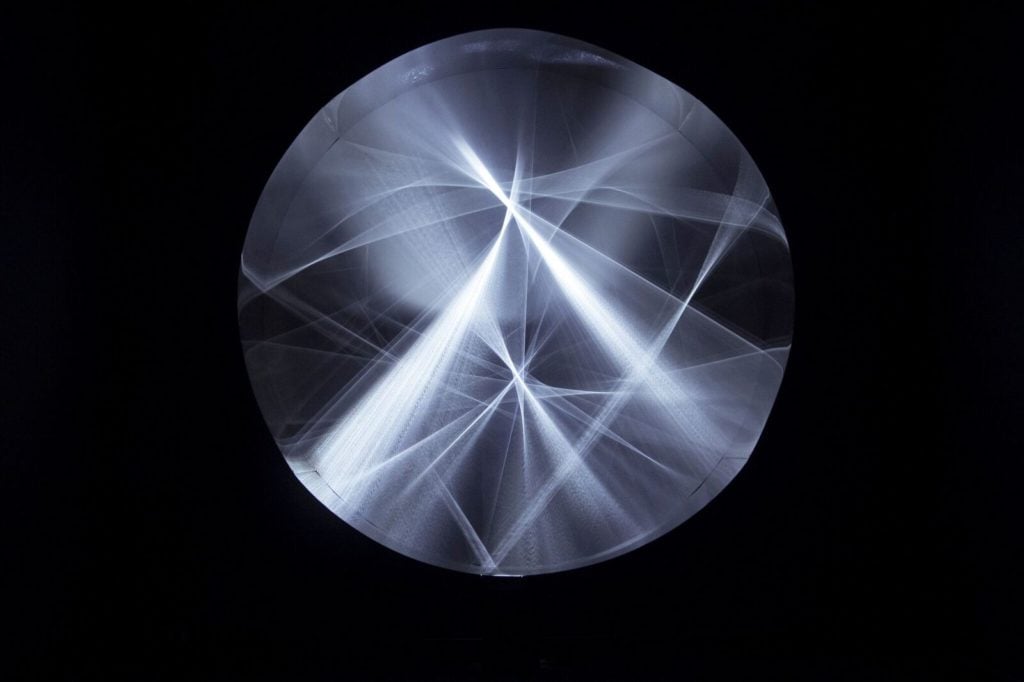
Julio Le Parc, Continuous light cylinder of the Enlightenment Series, 1962 / 2012. Julio Le Parc. © 2016 Artists Rights Society (ARS), New York / ADAGP, Paris. Photo by Everton Ballardin, © Galeria Nara Roesler.
There, Mobile rouge sur blanc, a 1960 piece from Le Parc’s early “Contineuls-Mobiles” series, is a clear ancestor to Sphère bleu fluo, with transparent red acrylic squares hung against the wall from nylon threads. There is less dimensionality, but the focus on movement and light is a through-line across the decades.
“It’s not really a premeditated approach to light,” explained Le Parc of his work. “It’s rather coming and discovering the different possibilities as I work and I begin to incorporate different materials… one thing leads to another in the process.”
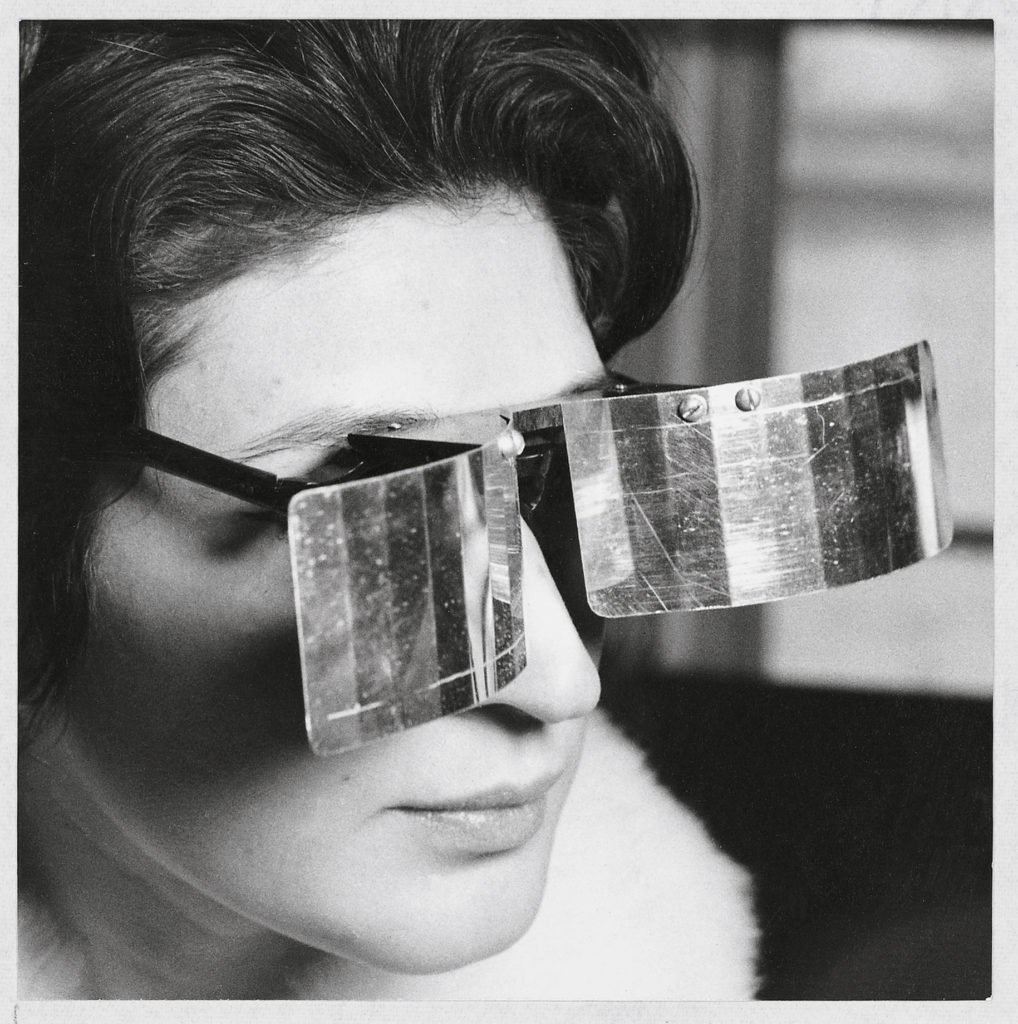
Julio Le Parc, Martha Le Parc with Lunettes pour une vision autre (Eyeglasses for Another Vision),1965. Julio Le Parc © 2016 Artists Rights Society (ARS), New York / ADAGP, Paris. Photo by Julio Le Parc / Atelier Le Parc.
Another piece from that series will likely be a standout at PAMM, where visitors to the exhibition will be greeted by a “Continuel-mobile” from 1963 that made its debut at the Museé d’Art moderne de la Ville de Paris during the third Paris Biennale. “The title of the work addresses the constantly transforming compositions the piece generates through movement and the refraction of light,” said Brodsky.
The artist “works indefatigably and obsessively, making thousands of drawings, sketches, and exploring ideas throughout long series,” she added. “In some way, recent museum attention has allowed him to go back to some of his unrealized ideas and expand the scale of his work, and he is obviously excited about this.”
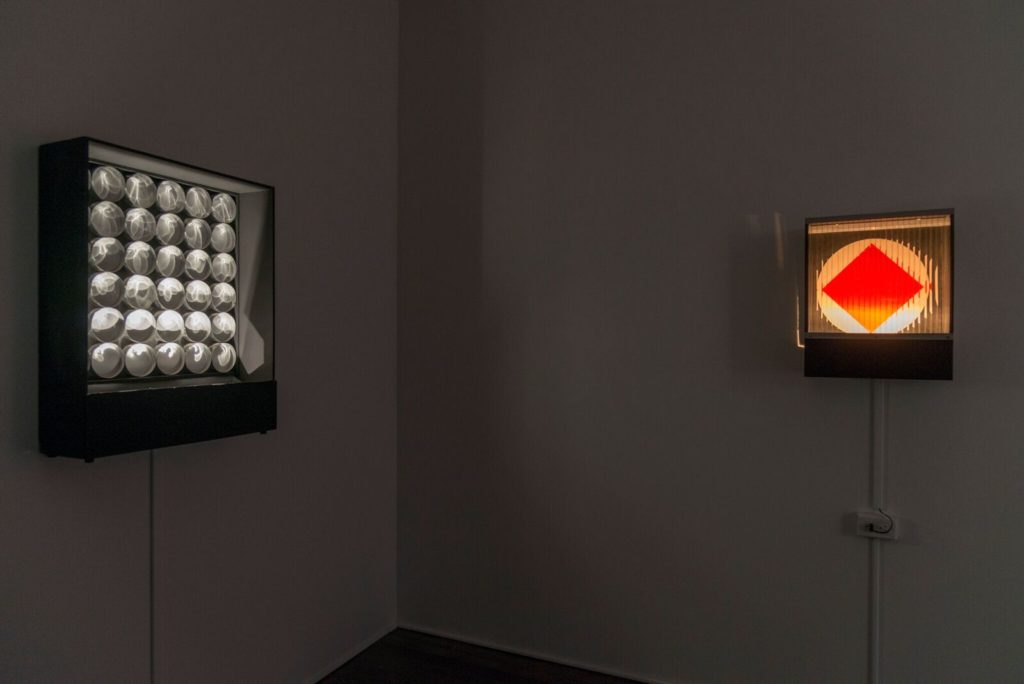
Installation view of Julio Le Parc 1959 – 1970. Exhibition at Galeria Nara Roesler, New York, Photo by Adam Reich, Courtesy Galeria Nara Roesler.
If Le Parc’s American museum debut seems overdue, Brodsky has an explanation for that: “Only recently has there been a broadened appreciation of artists outside the North American canon, especially on artists who are from Latin America and politically engaged.”
At the Perez, over 100 works, both visually and physically captivating, will be on view. “It has been an extremely complicated exhibition to put together, with major light installations, labyrinths, game rooms, and historical works on paper and canvas,” said Brodsky.
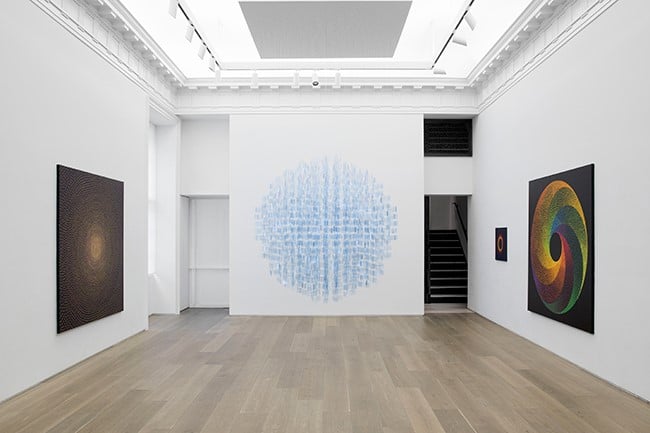
Julio Le Parc at Galerie Perrotin. Courtesy of Galerie Perrotin.
It may seem like a widely disparate body of work, but for Le Parc, “there’s always the same principle of searching.” Approaching his 90s, he remains busy, employing just one or two assistants in his studio, where he lives. On doctor’s orders, Le Parc takes a nap each afternoon, but the bulk of his day is still devoted to art.
With each new idea, the artist is looking to the future, noting eagerly that “every new place brings in new experiences, new reflections.”
“Julio Le Parc” is on view at Galerie Perrotin, 909 Madison Ave, November 4–19, 2016.
“Julio Le Parc: 1959–1970” is on view at Galeria Nara Roesler, 47 West 28th Street, October 7–December 17, 2016.
“Julio Le Parc: Form into Action” is on view at Pérez Art Museum Miami, 1103 Biscayne Blvd, November 18, 2016–March 19, 2017.